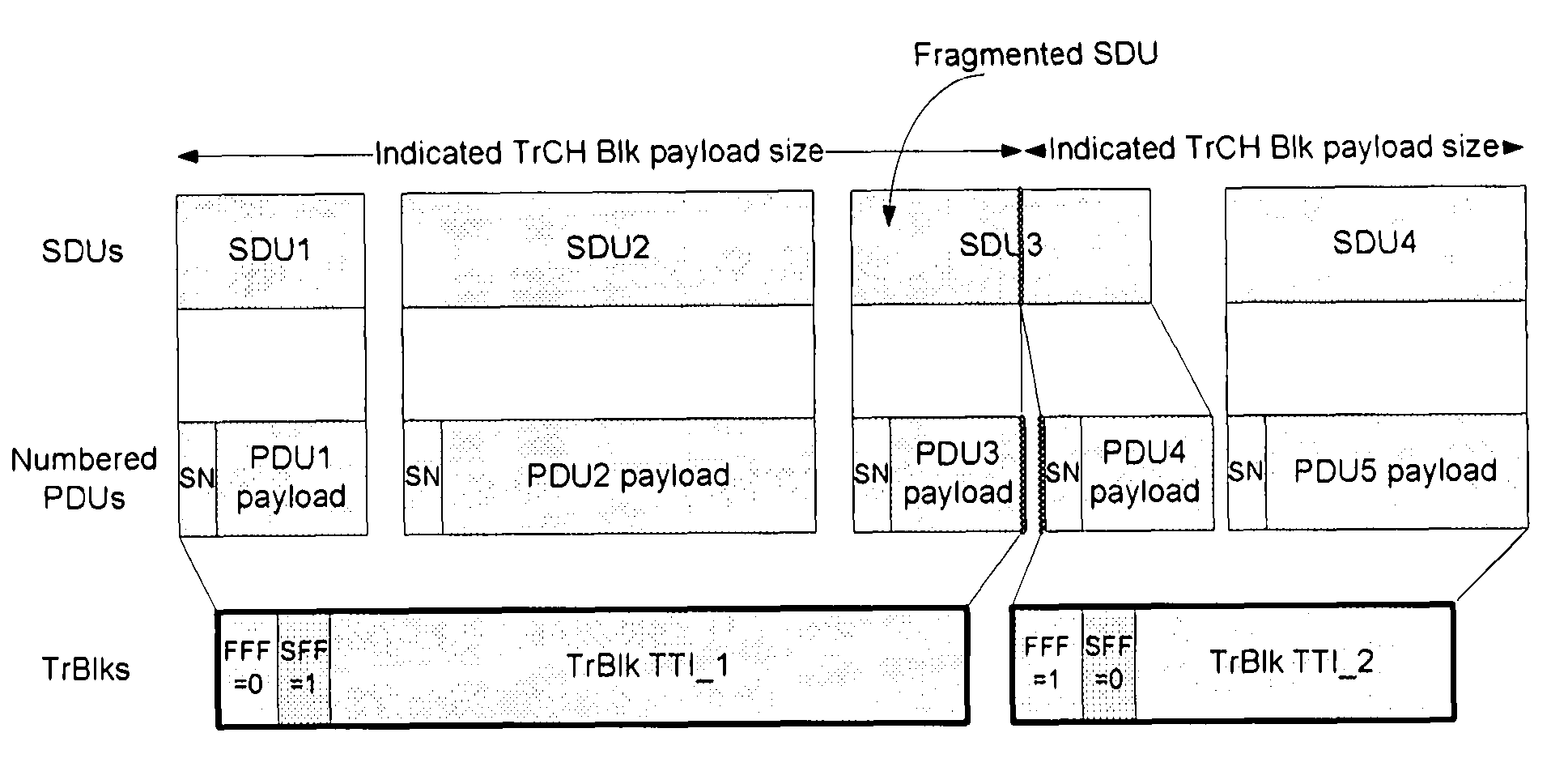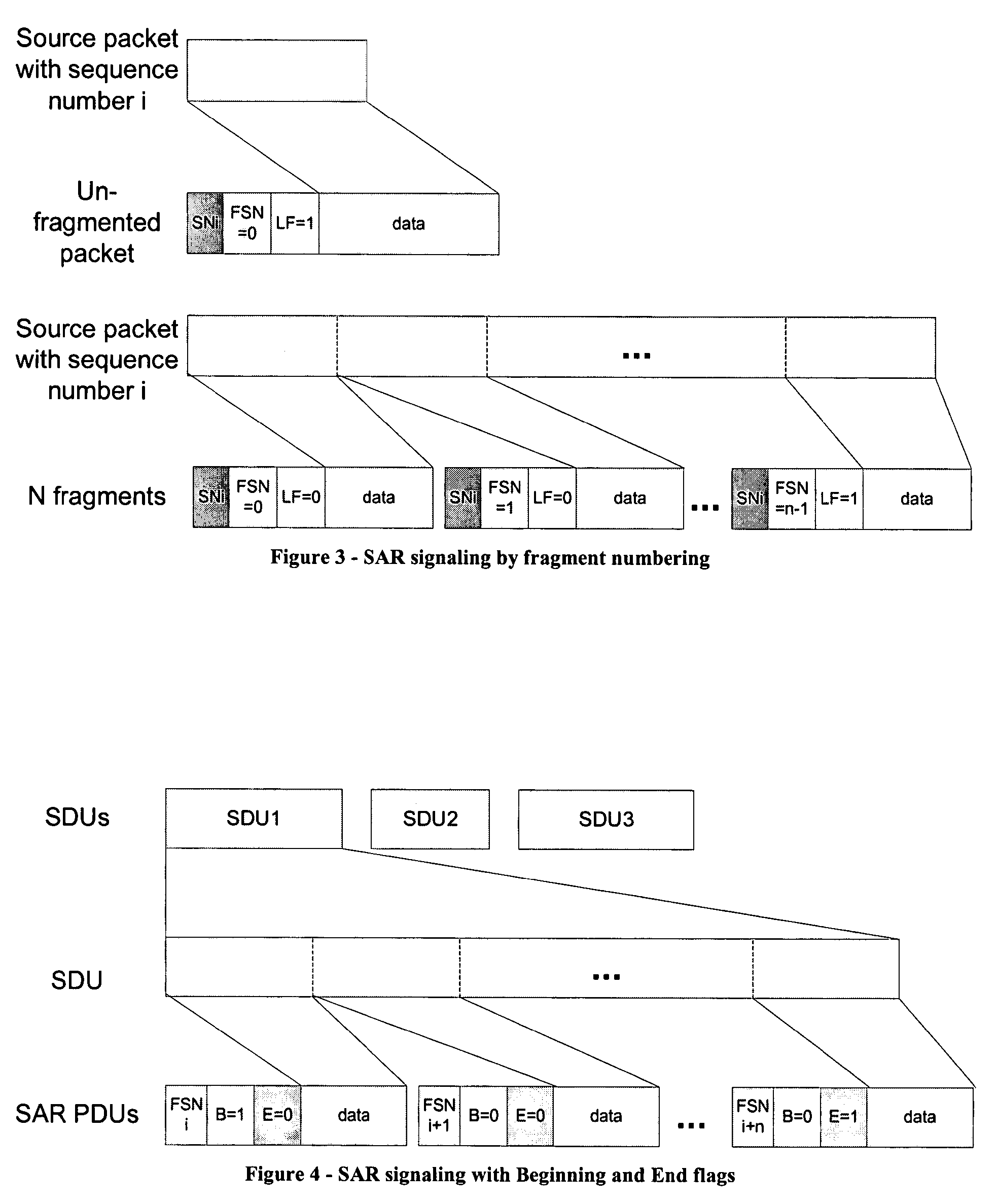Method and apparatus for packet segmentation and concatenation signaling in a communication system
a communication system and packet segmentation technology, applied in the field of method and apparatus for packet segmentation and concatenation signaling in a communication system, can solve the problems of increasing the complexity of rlc, increasing the complexity of headers, and ineffective techniques when considering variable pdu size, etc., to achieve efficient and feasible segmentation
- Summary
- Abstract
- Description
- Claims
- Application Information
AI Technical Summary
Benefits of technology
Problems solved by technology
Method used
Image
Examples
Embodiment Construction
[0064]The present invention is applicable to any data packet communication system using variable length transmission frames, for example, wireless networks such as GSM, UMTS, WiLAN, WiMAX, etc. or fixed networks such as IP, frame relay, PPP, ATM etc.
[0065]The different embodiments of the invention are described based on the OSI layer model, especially the exchange of packets between an SDU and PDU layer. Please see the background section for a more detailed description of the relevant parts of the OSI layer model as well as SDUs and PDUs. The background section also describes the reasons for employing fragmentation and / or segmentation in communication networks.
[0066]In this invention, a method is proposed that enables an efficient Segmentation and Concatenation procedure at the fixed signaling cost, which makes the overhead decrease in percent with the length of the transmitted TrBlk.
[0067]SDU segmentation and PDU concatenation both depend on the physical resources that are allocate...
PUM
 Login to View More
Login to View More Abstract
Description
Claims
Application Information
 Login to View More
Login to View More - R&D
- Intellectual Property
- Life Sciences
- Materials
- Tech Scout
- Unparalleled Data Quality
- Higher Quality Content
- 60% Fewer Hallucinations
Browse by: Latest US Patents, China's latest patents, Technical Efficacy Thesaurus, Application Domain, Technology Topic, Popular Technical Reports.
© 2025 PatSnap. All rights reserved.Legal|Privacy policy|Modern Slavery Act Transparency Statement|Sitemap|About US| Contact US: help@patsnap.com



